Traditional Industries
Update:2022/7/14
Sakai has excellent traditional industries that we are proud to promote worldwide. Sakai knives are highly rated by professional chefs and Sakai’s bicycle making industry has its origin in gunsmithing. Other industries include kelp processing, incense making, carpet weaving, Chusen dyeing and Wazarashi cotton bleaching. These are the products of the skill of traditional craftsmen that requires long experience and excellent knowledge.
Knives
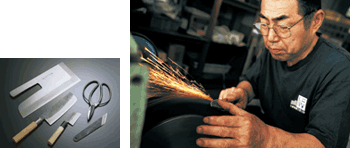
During the 16th century, tobacco cigarette leaves were produced in a large quantity, and special knives to cut these leaves began to be made, and it is believed that this is the origin of Sakai knives. During the Edo period (17th to late 19th century), Sakai knives gained the seal of the Tokugawa Shogunate, became famous nationwide and even now, they have the full confidence and support of consumers.
Wazarashi Cotton and Yukata
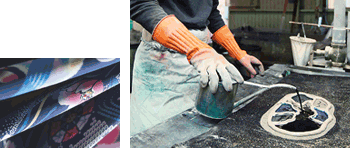
Wazarashi are cotton cloths that are bleached after removing impurities. They were developed along the affluent Ishizugawa River in Sakai in the early Edo
period because Sakai is located on the distribution route to bring Senshu produced cotton cloths to wholesalers in Osaka. Chusen is a traditional dyeing method of hand dyeing both sides of a cloth at the same time, and the colors of yukata cloths dyed in this method will not lose their colour even after many years.
Kelp Processing
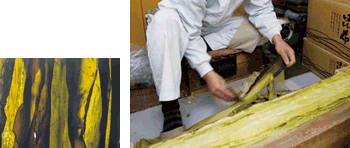
In the mid-Edo period (around the 18th century) a new sea route was developed to ship kelp from Hokkaido to Sakai via Shinomoseki, and with this Sakai’s kelp processing started to prosper. Various kelp products are processed in Sakai, including thinly cut tororo, thinly scraped oboro and Tsukudani boiled in soy kelp. Oboro is hand processed by skilled craftsmen to maintain its high quality.
Bicycle
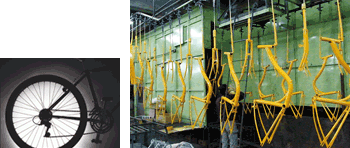
Sakai’s bicycle industry started during the Meiji period (late 19th and early 20th century) when they repaired imported bicycles and made their own parts using the techniques they learned from gunsmithing. Currently Sakai has a 60% market share of the shipment of bicycles and bicycles parts.
Incense
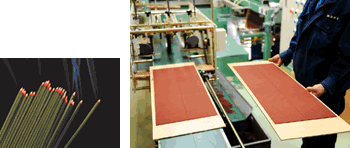
At the end of the 16th century, Japan’s first incense was produced based on a method introduced from China. Sakai’s incense is made from the finest natural ingredients and it is called aromatic artwork.
Carpets
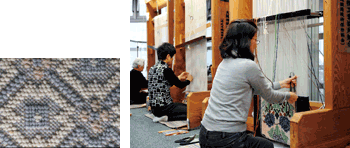
Sakai Dantsu hand woven carpets are said to have been first made and sold by a yarn merchant in the mid-Edo period (around the 18th century) and it became one of Japan’s major export products in the Meiji period (late 19th and early 20th century). Currently a range of carpets with various designs and materials are being produced.
